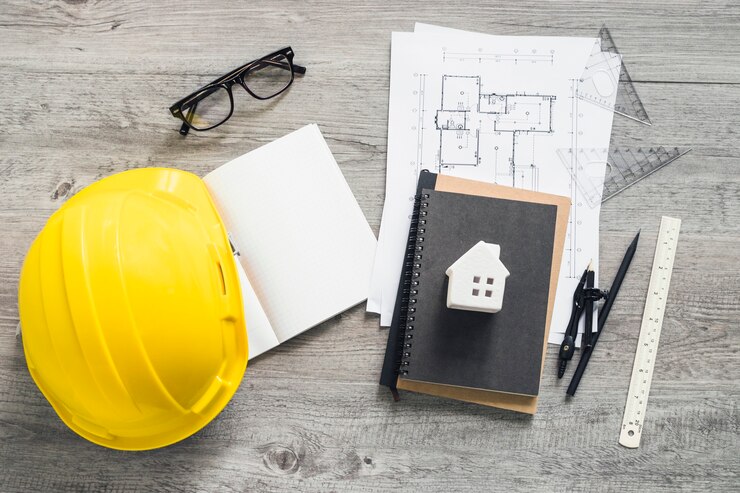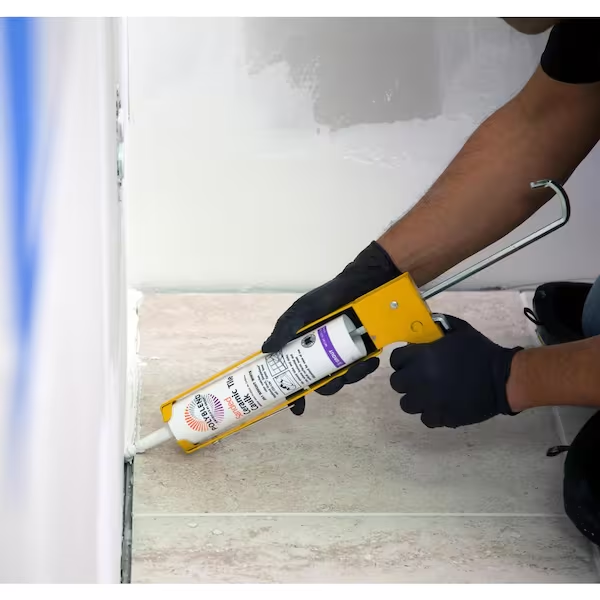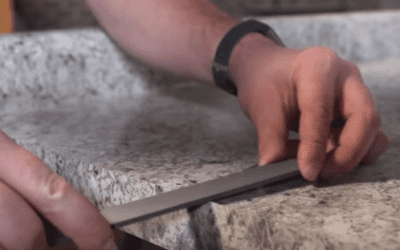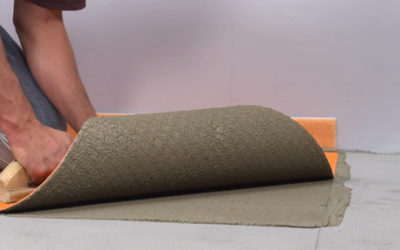Everything You Need to Know About Shower Valves When Designing a Bathroom. You have designed the perfect bathroom, but what about your shower fixtures? Do you know how to choose the right fixtures for your bathroom?
Shower fixtures include different components and one of the most important is the shower valve. It has a direct effect on your bathroom design and ultimately its functionality. Shower valves are the heart of your shower system. They provide water pressure to your shower head and act as the main control system for your bathtub fixtures.
It is important to install the correct valve from the beginning so that your fixtures operate smoothly, desired water pressure and temperature are instant, and there are no safety issues when using the shower or bath.
But what should you be looking for in a shower valve? And what exactly is the difference between all of the shower valves out there? In this article, we talk about all the different types of shower valves that are on the market so you can find the best one for you.
Must Know Keywords and Definitions
To give you a better understanding, before moving on to the main topic, we need to explain some definitions and keywords.
Shower Fixture
Shower fixture is a general term that refers to the hardware and fittings that are used in a shower to deliver water when it’s turned on. Various components of a shower fixture are connected to the plumbing system and used to control and direct the flow of water.
Shower Faucet
A shower faucet includes different parts that work together to control the flow of water to the outlets, typically consisting of a handle or handles to turn the water on and off and adjust the temperature.
Most shower faucet sets include three major components: shower trim, shower valve, and cartridge (see Figure 1).
Figure 1
Shower Trim
Shower trim refers to the showerhead, handles, and every visible decorative part of the shower faucet set (see Figure 2). They are used to adjust the temperature, pressure, and volume of water when turned on. Shower trims come in various styles and finishes to match any bathroom design. They are also available in various sizes and shapes to fit any space. With their easy installation and maintenance, they are a great choice for those looking for an easy way to upgrade their bathrooms.
Figure 2
Shower Valve
A shower valve is an important inner component of your shower system that controls the flow of water to your shower. It is also responsible for regulating the temperature and pressure of the water, as well as turning it on and off. The rough-in valve is the heart of the system. Without a shower valve, you would not be able to enjoy a hot or cold shower. The right shower valve can make all the difference in your bathing experience and should be chosen carefully. You can see the difference between the trim kits and the rough-in valve in Figure 3.
Figure 3
It is important to note that some shower trim sets do not include the valve, they are sold separately. Others include the valve as part of the set. Because they work together, we suggest buying both from the same manufacturer if they are sold separately, to ensure a good fit and proper operation. It is also important to mention that there is a specific trim for each type of shower valve, and other trim kits cannot be used as they are not interchangeable.
Cartridge
A cartridge is a part of some modern shower valves that connects the rough-in valve to the external trim handles (see Figure 4). It is typically a cylindrical or tubular piece that sits inside the valve body and controls the flow of water through the valve. Not all valves include a cartridge but having one minimizes the burden on the shower valve by doing the work of regulating the water flow and controlling the water temperature.
The cartridge contains a stem that is connected to the handle of the valve, which is used to turn the water on and off, and also to adjust the temperature. The stem moves up and down inside the cartridge, which controls the water flow through the valve. It also prevents water from leaking out of the shower trim, ensuring you get a consistent stream of water when you turn on the shower.
Using a shower valve with a cartridge is recommended for better performance. If you opt for a valve with a cartridge, the cartridge might already be included or you may need to buy it separately. The cartridge is typically made from plastic or brass and can be easily replaced if it becomes damaged or worn out over time. Knowing how to replace a cartridge can help you save money and time in the long run.
Figure 4
Water Temperature Vs Water Pressure Vs Water Flow
Water temperature, pressure, and flow are all important terms to know when learning how water systems work. Temperature refers to how hot or cold the water is, pressure refers to the force at which the water flows out, and flow refers to the volume of water that comes out. Understanding these concepts is essential for anyone involved in the design or maintenance of shower plumbing systems.
Different Types of Shower Valves
Traditional Hot and Cold Shower Valve
This is the simplest type of shower valve. Traditional hot and cold valves connect hot and cold water pipes to a single outlet. This allows the user to adjust the temperature of the mixed water by controlling the amount of hot and cold water flowing through the valve. They include a hot water inlet, a cold water inlet, a mixing valve, and a water outlet. These valves have been commonly used in homes for many years. They are still being used today and the modern ones have a really nice appearance. (see Figure 5)
Figure 5
2. Pressure Balancing Valve
Pressure balancing valves, also known as anti-scald valves, shower pressure valves, or mechanical valves, are one of the most common valves and provide a safe and efficient way to regulate the water pressure in your shower (see Figure 6).
A pressure balancing valve is designed to rebalance the water pressure to keep the shower from becoming excessively hot. This valve uses a cartridge with a diaphragm or piston that moves in response to changes in water pressure to maintain a consistent water temperature. The cartridge is typically connected to a temperature-sensing element that can detect changes in the water temperature and adjust the position of the diaphragm or piston to adjust the flow of hot and cold water, thus maintaining a consistent water temperature. However, it is worth mentioning that not all pressure balancing valves have a cartridge, as there are other types that use different mechanisms.
Most pressure balancing valves have a single control and a handle. Water becomes warmer or colder when the valve is turned left or right. Pressure balancing valves help to prevent scalding from hot water. They maintain an even temperature by compensating for changes in water pressure.
For example, if a shower is in use and a toilet is flushed, a pressure drop occurs in cold water because the toilet will suddenly draw a large amount of cold water from the shared supply line. The hot water supply line’s relatively higher pressure will cause the shower temperature to rise in the absence of a compensating mechanism (pressure balancing valve), possibly to an uncomfortable or even dangerous level.
Figure 6
3. Thermostatic Valve
A thermostatic valve is a device that regulates both the temperature and pressure of the water in your shower. It works by automatically adjusting the flow of hot and cold water using a thermosensitive element to maintain a consistent temperature. Many thermostatic valves include a dial that allows the user to preset the water temperature. The thermosensitive element expands or contracts to restrict the water supply when it reaches the desired heat threshold. This ensures that you have a comfortable shower experience every time. The thermostatic valve also helps to prevent scalding and can be used with multiple shower heads at the same time to provide an even temperature to each.
Thermostatic valves can have one, two, or three handles for turning the water on/off, and adjusting the pressure and temperature of the water (see Figure 7).
The single and dual handle types are used to control a single shower head. A three-handle type is used when you have two shower heads. In this case, one of the handles is used for controlling the temperature of both heads, and the other two handles control the water flow of each shower head.
Figure 7
4. Shower Diverter Valve
A shower diverter valve is another type of valve that helps to switch between different water outlets, such as a showerhead, handheld showerhead, body jets, and tub spout. By using a diverter valve, you can enjoy the convenience of having multiple water outlets in one bathroom without having to install separate valves for each one.
There are three types of diverters:
1. Tee Diverter:
A tee diverter allows you to switch between the showerhead and tub spout without having to turn off the water. This type of valve is typically installed in bathrooms with a combination shower/tub setup, and it can be used to control the flow of water from both fixtures. Using the metal pull on the front of the faucet, you can divert water from the tub spout to the showerhead and vice versa (see Figure 8). This valve is designed to switch the flow of water between the shower head and tub spout but it does not regulate the pressure or temperature of the water. There is a separate handle for regulating the pressure and temperature of the water and turning the water on and off.
Figure 8
2. Two-Way Diverter:
A two-way diverter allows you to control the water flow between two outlets similar to the tee diverter but in a different way. It consists of a rough diverter and a trim. The rough diverter has two outlets and one inlet (see Figure 9). The hot and cold water must be mixed together before entering the diverter. This will require a mixing valve which is connected to the diverter. (Depending on the brand of diverter, the mixing valve may be included otherwise it would have to be purchased separately.) Then using the trim you can control which outlet the water flows through.
Figure 9
3. Three-Way Diverter:
A three-way diverter valve allows for three functions. It has one inlet and three outlet ports (see Figure 10). By using this diverter, you can divert water between three outputs such as a tub spout, a showerhead, and a handheld.
Figure 10
5. Transfer Valve
A shower transfer valve is typically used in showers to allow water to be diverted from the main supply line and switched between different types of outlets (see Figure 11). Now, you might be wondering if it functions similar to the diverter valve. Yes, but the difference between a transfer valve and a diverter valve is that a transfer valve sends water to multiple outlets at the same time. A transfer valve is typically used to divide the flow of water between multiple outlets simultaneously. For example, water can be sent to both the showerhead and bathtub at the same time.
Figure 11
In Figure 12, you see a two-way transfer valve with three settings. For example, one outlet could go to the tub spout and the other may go to the shower head or body jets. This is called a three-setting transfer valve. In this case, you can send all the water to one outlet, or to two different outlets at the same time.
Figure 12
The three-way transfer valve has the same shared functions as the two-way transfer valve. It has three additional options for water sharing between the three components. It can therefore be referred to as a six-setting transfer valve (see Figure 13).
Figure 13
6. Integrated Diverter Valve
This is a brand-new type of shower valve. This valve integrates a diverter and a thermostatic valve, so you can benefit from the features of both. It is actually a thermostatic valve with a diverter and volume control. The diverter allows you to switch between multiple outlets, such as a hand-held shower head, body jets, or a fixed shower head and the thermostatic feature helps regulate the temperature of the water so that it remains consistent throughout your shower. It features separate controls in one trim (see Figure 14).
Some types of integrated diverter valves allow you to run multiple outputs simultaneously. This technology has one rough-in valve and one trim with multiple handles to adjust the flow, temperature, and pressure of water. These shower systems look fantastic and are very simple to set up and use.
Figure 14
Figure 15 illustrates the difference between an integrated valve and a standard valve.
Figure 15
7. Digital Shower Valve
A digital shower valve is a modern way to control your shower. Instead of handles, these valves include a control panel that you can use to customize your shower settings with the touch of a button (see Figure 16). Some are even equipped with smart features.
This feature allows you to adjust the temperature and flow of water from the comfort of your smartphone or tablet. You can also set up timers, and create personalized settings. With this advanced technology, you can enjoy a more comfortable and luxurious shower experience.
Figure 16
Top Shower Valve Manufacturers
Finding the right shower valve manufacturer can be challenging. With so many companies offering different products and services, it is important to know which ones are the best. Here, we provided a list of some of the top shower valve manufacturers:
- American Standard
- Delta
- Grohe
- Kohler
- Moen
- Peerless
- Pfister
How to Choose the Right Valve for Your Bathroom?
Choosing the right valve for your bathroom will depend on many different factors. It is important to consider the type of valve, size, and material when choosing. The right valve can make all the difference between a successful and an unsuccessful installation. Here are some of the key factors to consider when choosing a valve for your bathroom:
- Budget
- The size of your bathroom
- Types and number of water outlets
- Desired appearance for the fixtures
- The ability to use multiple showering options at the same time
- Special requirements, such as the need for ADA compliance.
Remember that the type of valve you choose for your bathroom is mostly based on personal preference. However, you should always make sure that you are making an informed decision based on your specific needs.
Conclusion
If you have made it this far, you have learned a lot about shower valves. Having this information will help your bathroom renovation go as smoothly as possible, as well as save you time and money.
There are different types of shower valves available on the market, each with its own set of features. The type of shower valve you choose will depend on all the different factors discussed in this article. What matters most is having enough information before deciding on the shower design so you choose the best valve from the beginning. We always recommend consulting with an experienced contractor to get the shower experience you desire.
Matrix Company Solutions Corp. has more than 25 years of experience in the renovation field. If you need a bathroom renovation and live in the Philadelphia area, do not hesitate to contact us. We are here to help you achieve the beautiful and functional bathroom you are looking for. Give us a call or contact us via our FREE Consultation Service!










0 Comments